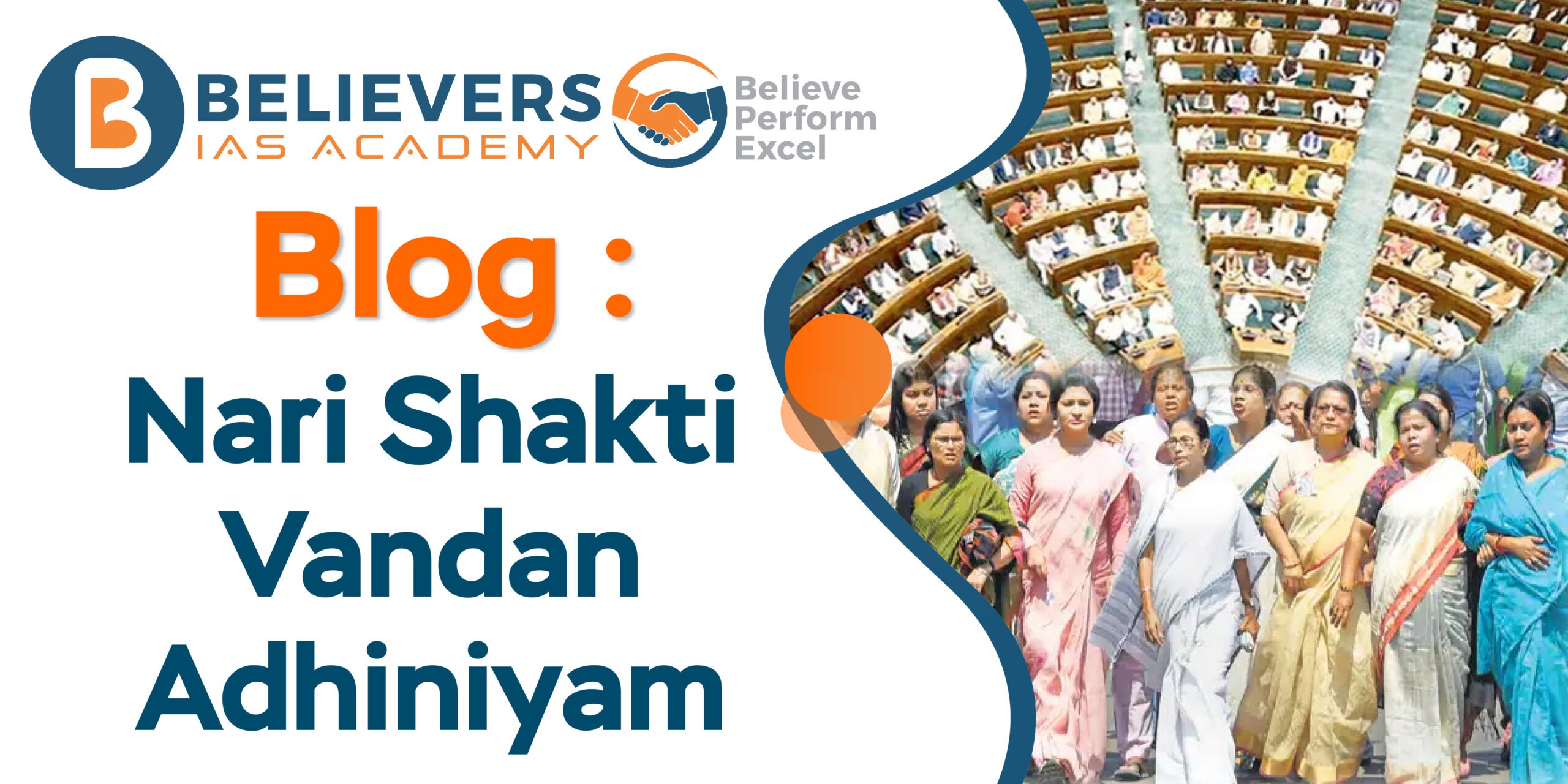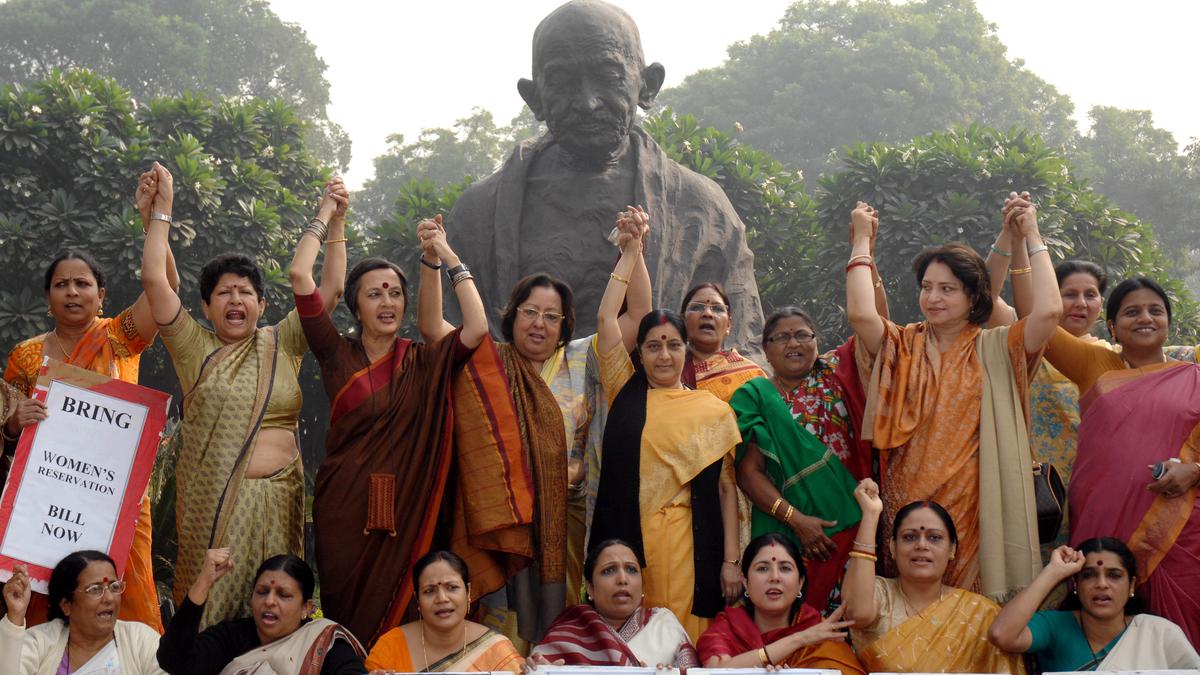What is the Women’s Reservation Bill?
- The Nari Shakti Vandan Adhiniyam or Women’s Reservation Bill or The Constitution (108th Amendment) Bill, is a proposed legislation in India aimed at providing greater representation for women in the country’s legislative bodies, including the Lok Sabha (the Lower House of Parliament) and state legislative assemblies.
- The primary objective of this bill is to promote gender equality in politics and increase women’s participation in the decision-making process of the country. The seats were proposed to be reserved in rotation and would have been determined by draw of lots in such a way that a seat would be reserved only once in three consecutive general elections.
What is the historical background of women’s representation in Politics?
- Indian National Movement (1931): During the Indian National Movement, leaders such as Begum Shah Nawaz and Sarojini Naidu sent a memo to the British Prime Minister highlighting the significance of women’s status in the new Constitution, which is where the call for women’s political participation first emerged.
- National Perspective Plan for Women (1988): This plan provided the groundwork for constitutional revisions and advocated for the reservation of seats for women at various levels of government, from panchayats to Parliament.
- 73rd and 74th Constitutional Amendments (1992): The 73rd and 74th Constitutional Amendments (1992) required 33.3 per cent reservation for women in urban local bodies and Panchayati Raj Institutions (local bodies). It was a big step in the right direction for women’s political empowerment.
- Reservations at the state level: Several Indian states, including Maharashtra, Andhra Pradesh, Bihar, Chhattisgarh, Jharkhand, and Kerala, have put in place legal provisions to guarantee a 50% reservation for women in local bodies.
What were the key bills passed to ensure women’s Empowerment?
- Women’s Reservation Bill (1996): In 1996, the 11th Lok Sabha first heard of the Women’s Reservation Bill. It suggested allocating one-third of the Lok Sabha and state legislative assembly seats to female lawmakers. With the Lok Sabha’s dissolution, the bill, however, became inoperative.
- The Constitution (108th Amendment) Bill, 2010: By amending the Constitution, this measure would have given women the right to hold one-third of the seats in the Lok Sabha and state legislatures. It was approved by the Rajya Sabha in 2010, but the Lok Sabha did not act on it until the sessions of 2014 and 2019.
What is the current representation of women?
- With only roughly 10.5 per cent of the total Parliament members being women, women’s presence in Indian politics is still quite low. The national average for female representation in state legislative bodies was only about 9 per cent.
- By increasing the number of women parliamentarians to 181 from 82 members currently, this measure would greatly improve the representation of women in Indian politics.
What is the ranking of India in the Gender Gap Report?
India is ranked 48th out of 146 nations in the world in terms of political empowerment (the proportion of women in parliament and ministerial positions). It mentions that in comparison to top-ranked nations like Bangladesh and Iceland, India’s score in this category is quite low.
What are the criteria for evaluating women’s Political Participation?
- Women Voters: In the most recent Lok Sabha elections, almost as many women as men cast ballots, indicating a considerable increase in women’s voting engagement.
- Women as Candidates: Although the percentage of female candidates has grown over time, it is still low when compared to male candidates.
What are the advantages of introducing a women’s Bill in the parliament?
- Promotion of Gender Equality: Promoting gender equality in political representation is one of the main benefits of introducing a women’s bill. It tackles the historical underrepresentation of women in positions of power and aids in closing the political gender gap.
- Women’s Empowerment: By allocating seats in legislative bodies to women, the measure gives women the ability to take an active part in politics. It gives them a forum to express their issues, promote women’s rights, and participate in the formulation of policies.
- Diverse Perspectives: Diverse perspectives are brought to the table by the increased representation of women in politics. Women frequently have unique perspectives and experiences with topics including family welfare, gender-based violence, healthcare, and education. Their presence may result in more thorough and knowledgeable policymaking.
- Prioritizing Women’s issues: Women lawmakers are more likely to prioritize and speak out for issues that disproportionately affect women, such as gender-based violence, maternity health, and women’s economic empowerment. This may result in initiatives and changes to policy that successfully address these issues.
- Role models: Politicians who are women serve as examples for coming generations. Their presence dispels gender stereotypes and promotes female emancipation by motivating young women and girls to pursue professions in politics and leadership positions.
What are the ways to improve the women’s role in the parliament?
- Seat Reserving: Keeping seats aside for women in various legislative bodies has been a successful strategy for boosting representation.
- Increasing Education and Awareness: More women entering politics can be encouraged by raising knowledge among women about their rights and the value of political engagement.
- Addressing Gender-Based Violence: Policies and actions to reduce gender-based abuse and harassment can make the political world a safer place for women.
- Voting Reforms: Introducing preferential voting and proportional representation can improve women’s chances of winning elections.





